Red Hook’s revitalization: Will transit and development proposals change the small community?
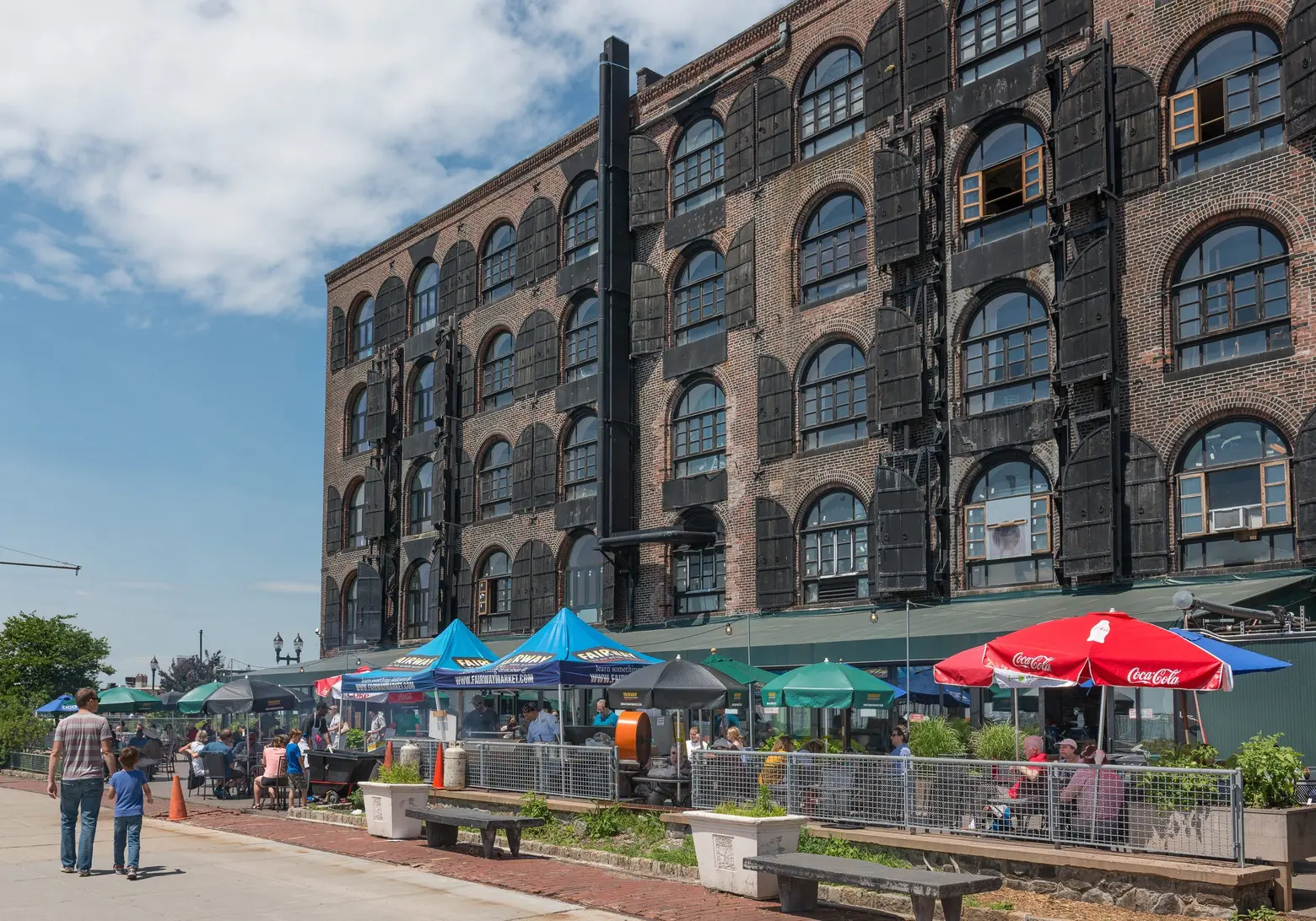
Photo of Fairway on the Red Hook waterfront, via CityRealty
The story of Red Hook is ripe for a movie-rights bidding war. In the past, there were mobsters and maritime ports, hurricanes and housing developments. Now there are politicians and developers fighting to rebuild and locals fighting back. In the end, what will happen to Red Hook is unknown but none of the massive proposals will happen in the near future. It is a small community in a big city that is tackling the issue many neighborhoods have dealt with in the past – how to grow.
After the massive Hurricane Sandy rebuilding effort, there is a very solid and passionate local population and a growing cluster of cool restaurants, retailers, and artists attracted to the area. That coupled with the recent political attention by Governor Andrew Cuomo and Mayor Bill de Blasio and the developers drooling over the possibilities of the 130 acres of land ripe for redevelopment (that’s six times the size of the $25 billion Hudson Yards development) make Red Hook very newsworthy.
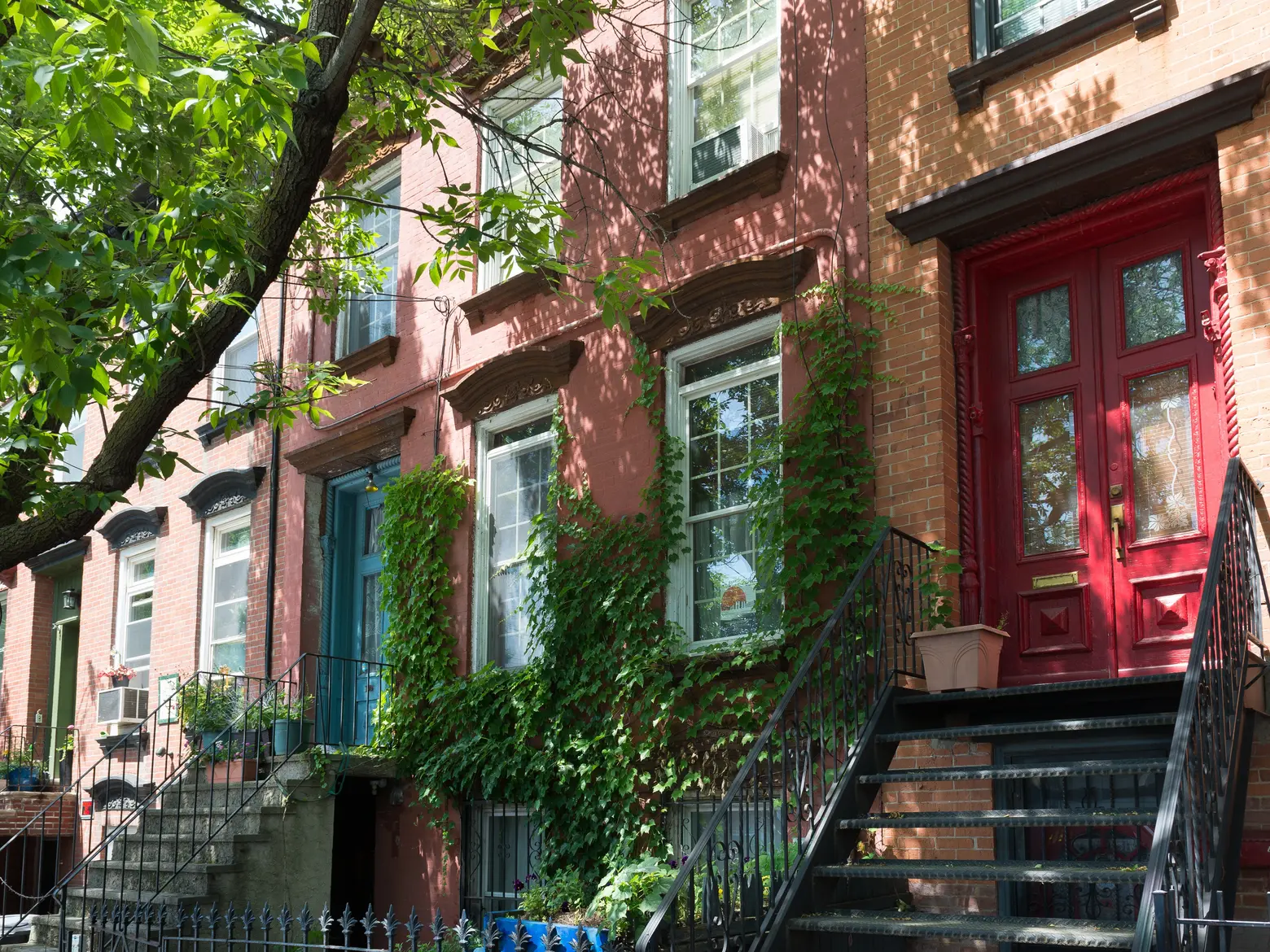 Typical Red Hook rowhouses, via CityRealty
Typical Red Hook rowhouses, via CityRealty
New York Magazine describes the Red Hook neighborhood of Brooklyn as, “A few blocks’ worth of well-regarded restaurants and bars (not to mention Ikea and Fairway) that are offset by a large and impoverished housing project and terrible transit.”
In Governor Cuomo’s State of the State address last week, he said, “Brooklyn’s Red Hook neighborhood is full of untapped potential and with this proposal, I am calling on the Port Authority to accelerate consideration of relocating its Red Hook maritime activities to free up this waterfront for more productive community use.”
To summarize, the present and future changes in Red Hook are as follows:
- Last year, ferry service started, connecting Red Hook, from Atlantic Basin, to Wall Street.
- Last Tuesday, in his State of the State address, Governor Andrew Cuomo called on the Metropolitan Transportation Authority to explore the possibility of a subway line extension from lower Manhattan, tunneling under the East River, to Red Hook, relocating the ship container terminal to Sunset park to clear the way for redevelopment of more than 130 acres of publicly owned waterfront
- Since 2016, Mayor Bill de Blasio has been strongly supporting and promoting the development of a streetcar service from Queens to Red Hook (expected completion date 2024).
- AECOM, the construction and engineering firm, has a massive proposal to redevelop 130 acres of Red Hook waterfront into a mixed community as well as extending the 1 subway line from Manhattan.
The History of Red Hook
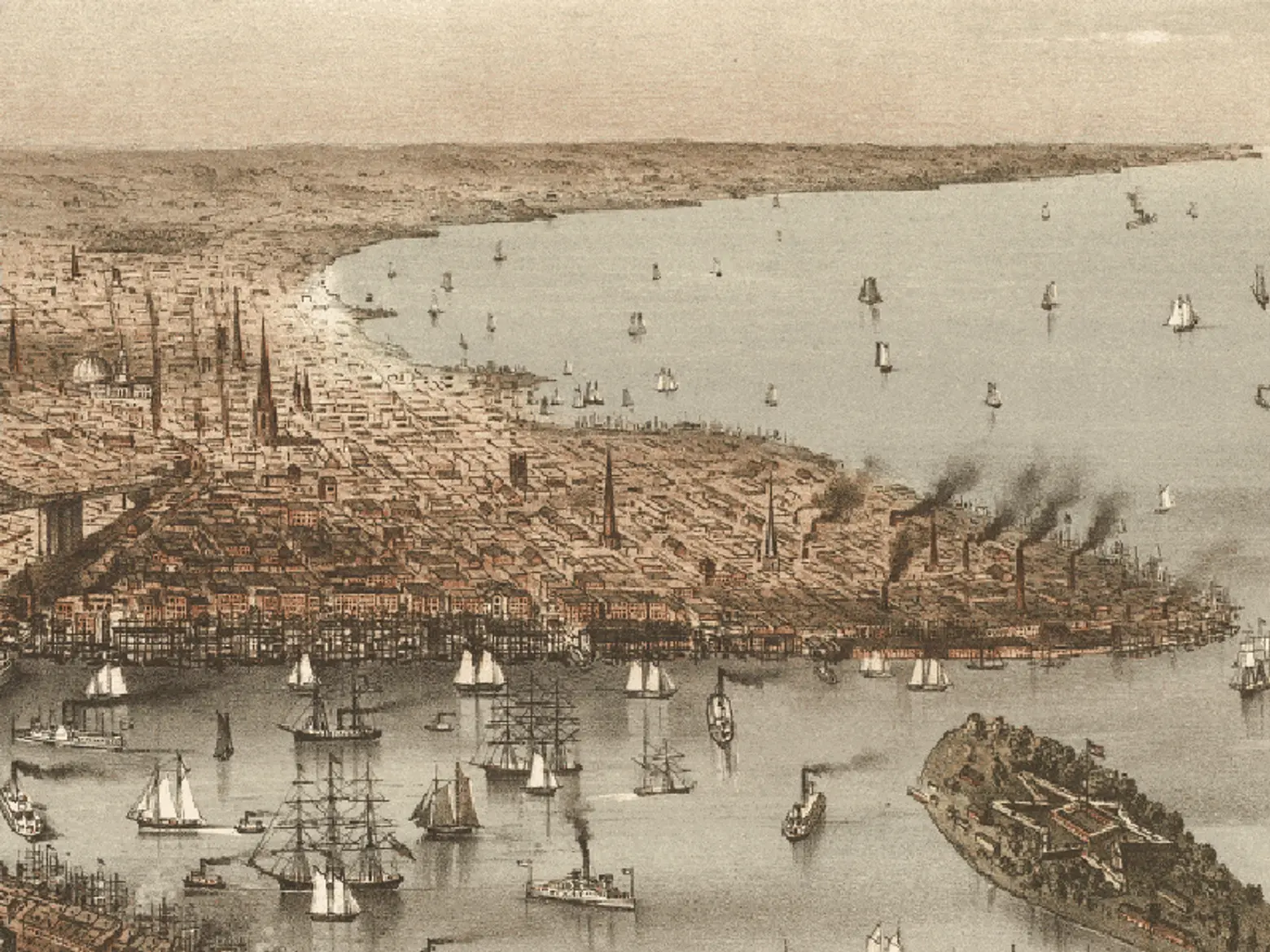 Red Hook in 1875, via Wiki Commons
Red Hook in 1875, via Wiki Commons
In 1636, the Dutch established Red Hook as a part of the city of Brooklyn and named it for its red clay soil and its hook-shaped peninsula (“Hoek” in Danish). In 1776, during the Battle of Brooklyn, Fort Defiance was built. So it is very fitting that Al Capone started his mobster career and got his “scarface” scar in defiant Red Hook. In the 1840s, maritime entrepreneurs built an intricate system of canals and basins in Red Hook as it grew to become the busiest freight port in the world. In the 1960s, when containerization shipping replaced traditional bulk shipping, many businesses and jobs moved to the deeper waterfront in New Jersey. Unemployment increased and the neighborhood’s economy fell into a rapid decline. By the 1970s and ‘80s, Red Hook became known as a crime-ridden, desolate neighborhood severed from the rest of Brooklyn. In 2012, Hurricane Sandy devastated Red Hook, flooding the buildings and streets necessitating massive rebuilding efforts.
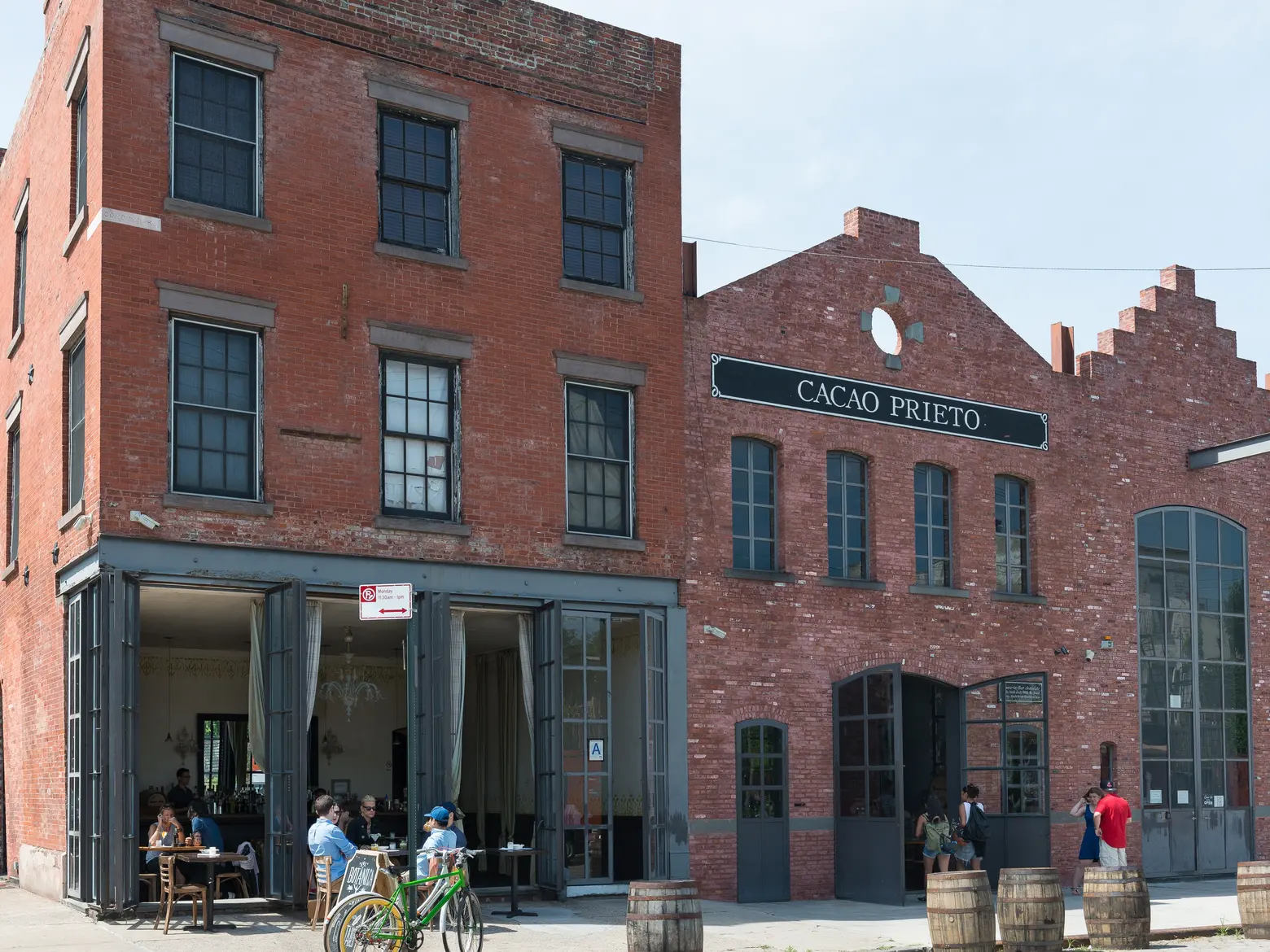 Via CityRealty
Via CityRealty
A 2016 New York Times article, titled “Red Hook on the Rebound,” highlighted many of the hipster businesses opening in the area like Red Hook Winery, Widow Jane Distillery, Cacao Chocolate Factory in addition to the sprawling Ikea, by the waterfront Erie Basin Park, and a 33,000-square-foot Fairway Market. There’s even a newly opened Tesla Motors showroom on Van Brunt Street.
Although many refer to Red Hook as severed from the rest of Brooklyn and the city, the New York City market is forever growing at manic pace and many are wondering if Red Hook is the next big redevelopment project.
Local resident John McGettrick says, “There are lots of proposals and suggestions, all of which will take years to come to fruition. Considering where we were in the ‘80s, we’ve come a long way. But people don’t want it to become like parts of waterfront in Williamsburg or Greenpoint, with extremely tall buildings that are out of character of the neighborhood. We definitely want more development on a human scale rather than a mega-development.”
Founder and Editor of the Red Hook Star Revue and Red Hook resident George Fiala says, “We have no interest in the subway or streetcar projects. We’re not interested in any of it.”
Housing
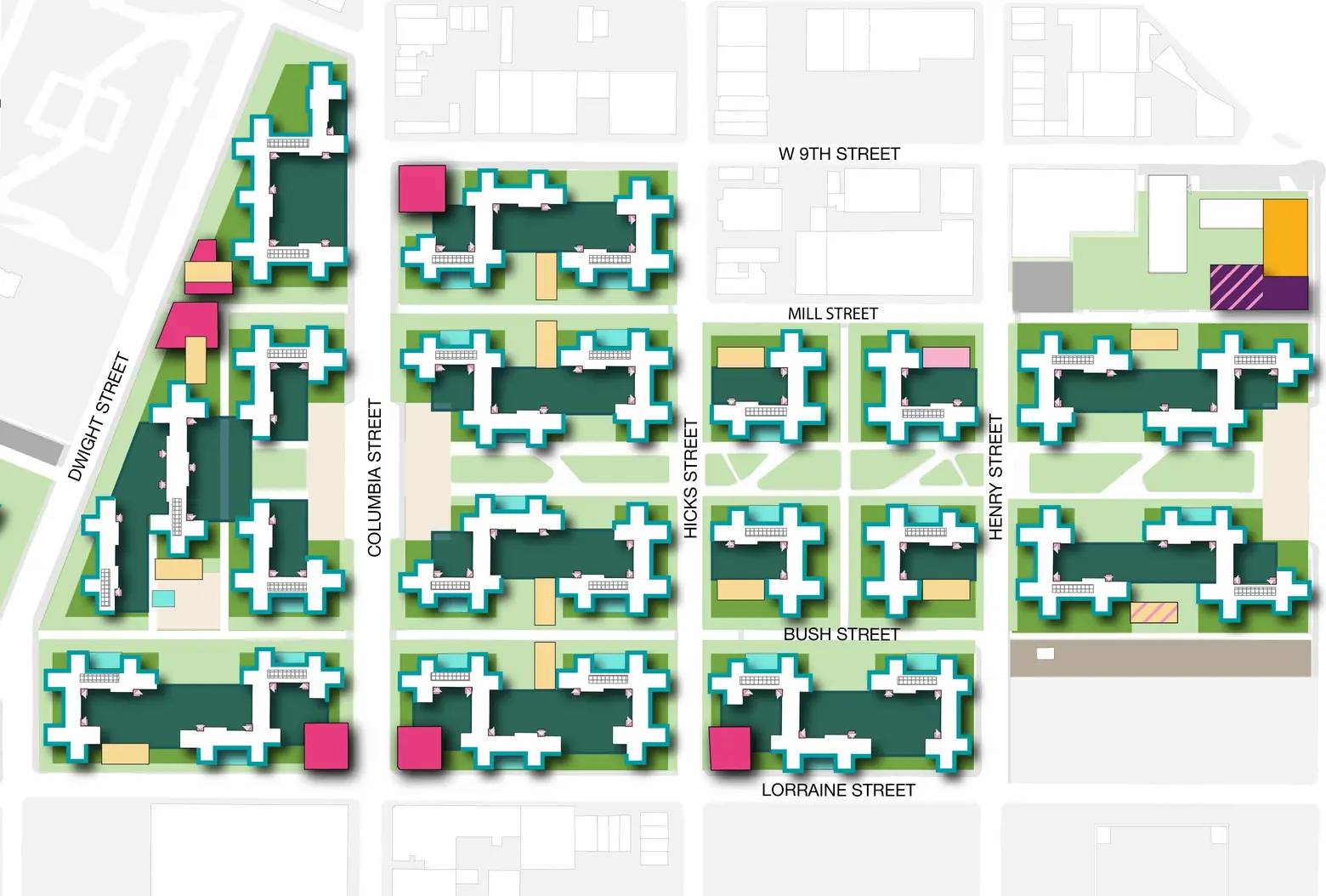 A map of Red Hook Houses, from a Sandy Resiliency & Renewal Program by KPF
A map of Red Hook Houses, from a Sandy Resiliency & Renewal Program by KPF
According to a 2014 survey report by the New York City Department of City Planning, more than half the neighborhood’s roughly 10,000 residents live in subsidized rentals at Red Hook Houses, with 32 total buildings on 39 acres. The report summarizes the community as, “Largely Hispanic and Black/African American (43 percent and 36 percent respectively as of Census 2010), the population is characterized by lower educational attainment than the rest of the borough and New York City. Nearly 40 percent of residents are living in poverty, and unemployment is 21 percent, more than double unemployment in Brooklyn and New York City….Only 4 percent of residents live in homes that they own… Analysis of firms located in Red Hook and their employees show that the construction, warehousing, manufacturing, and wholesale industries represent the largest share of firms located in Red Hook.”
The DeBlasio Administration’s “OneNYC” has set an ambitious goal to create and preserve 200,000 affordable housing units and create 160,000 market-rate units over the next 10 years and a total of 250,000-300,000 new units by 2040. The median income in Red Hook is $14,000 per year.
Redevelopment
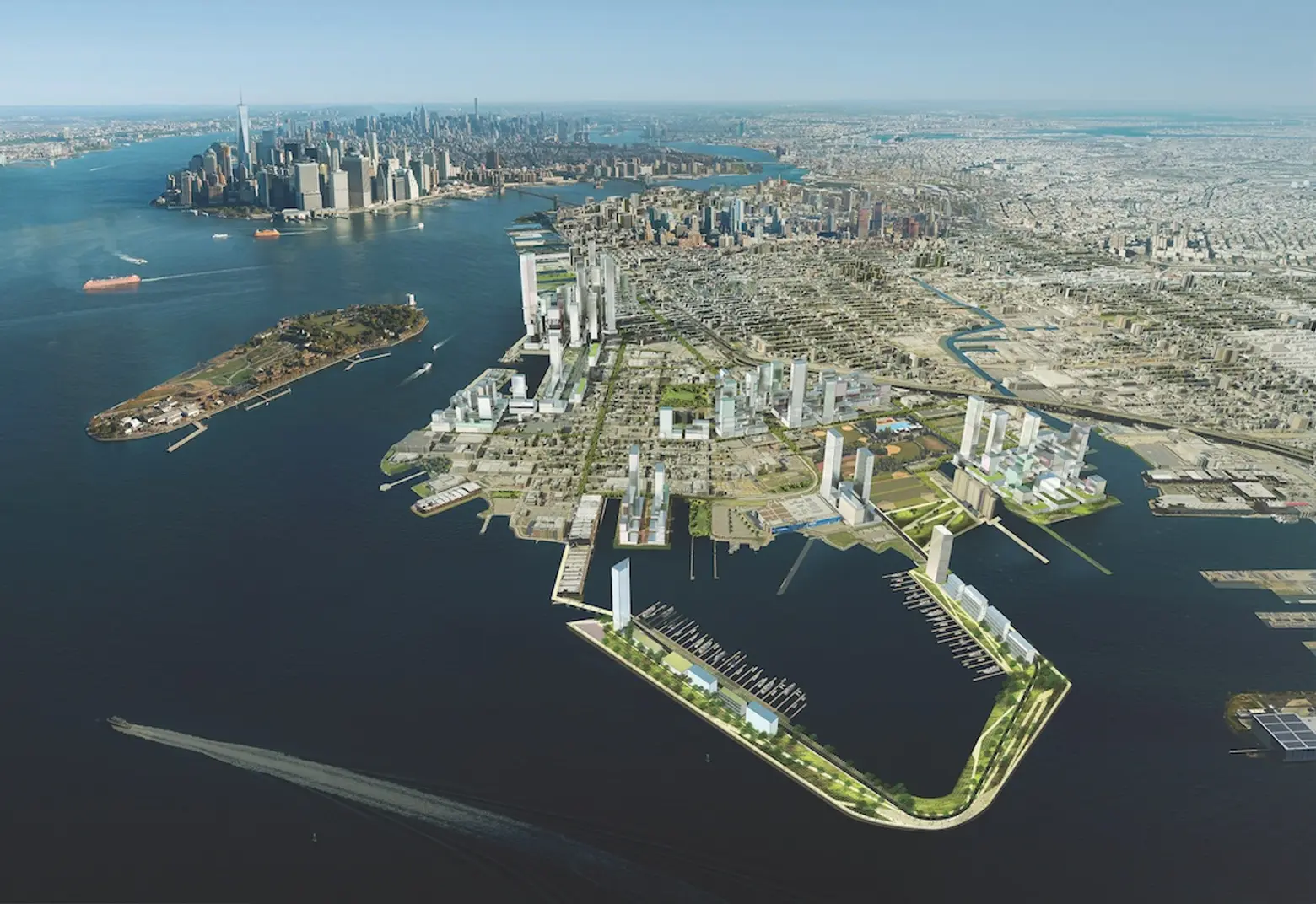 Rendering of Red Hook redevelopment proposal, via AECOM
Rendering of Red Hook redevelopment proposal, via AECOM
AECOM has a massive redevelopment proposal for Red Hook. According to their extensive study, “The City has 8.4 million residents, the most in its history, with all indications pointing to the population growing to 9 million by 2040. Much of that growth will take place in Brooklyn where, per the NYC Department of City Planning, Brooklyn’s population will increase by 13% by 2040.” The AECOM proposal includes turning a 30-acre parcel of Red Hook waterfront into a high-rise residential development with more than 12 towers with a total of 45,000 units of housing (25 percent of which would be affordable), an extension of the 1 subway line, parks and waterfront-flood protections.
According to AECOM, their plans encompass four goals: growth (making sure Brooklyn’s population growth is planned and holistic), equity (providing housing and jobs for all), resilience (withstanding future extreme weather), and sustainability (growing responsibly).
Chris Ward, AECOM’s New York Metro Chief Executive, responds to local resistance and fears of gentrification by posing the question: “What kind of city do you want to live in? What do you want your neighborhood to be?” Ward cites Long Island City as a cautionary tale: “Without integrated plans, you get gentrification and displacement.”
Ward admits, “Without a doubt, this is a hard one. Regeneration is difficult but San Francisco is another cautionary tale. If you try to stop growth, the city becomes so valuable that only super wealthy can live there. All you can ever ask people to do is act in their own self-interest.” He adds, “This is just a framework. We have to find the right balance.” But his point of view is that “something will happen in Red Hook. If we don’t protect the shoreline it will flood again. If we don’t develop, it will be economically savaged by the lack of transportation and education and the cost of residences will continue to rise. That’s an outcome no one wants.”
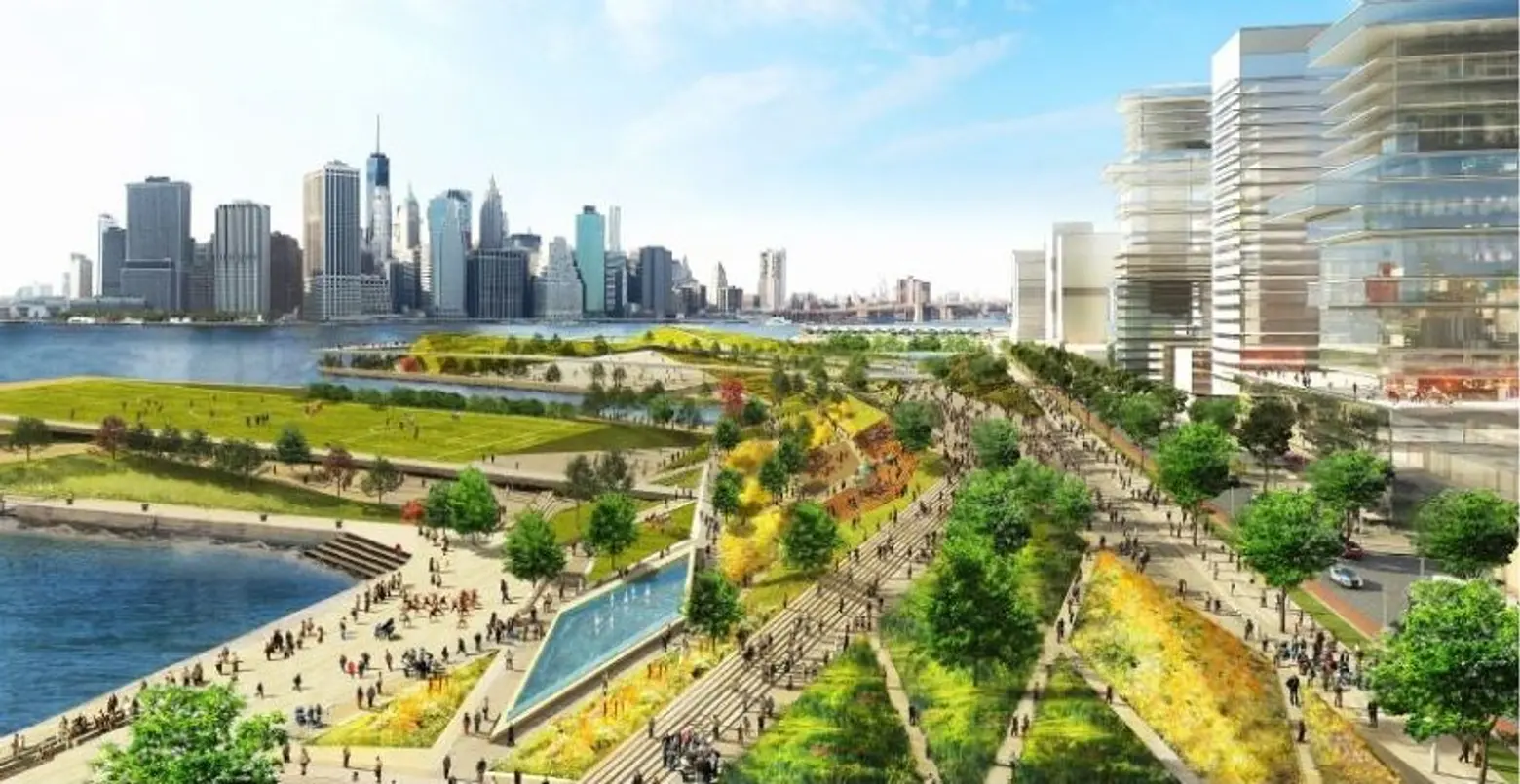 Rendering of Red Hook redevelopment proposal, via AECOM
Rendering of Red Hook redevelopment proposal, via AECOM
George Fiala disagrees. He thinks the bigger question should the city grow so big, “Do we want a world of 9 billion people?” He sums up AECOM’s plans as being, “like Dresden, bomb the whole city to rebuild afterwards.”
Fiala says he is not anti-development as he admires the local development at 363 Bond Street, built by Lightstone Group. “It turned out to be tasteful even though they did go higher by the canal. I was worried about parking but they built it so they built enough parking for the building and neighborhood and don’t charge a lot for it. Plus, the retail spaces are leased to local stores, not Starbucks. I say, develop, don’t destroy.”
Fiala explains, “We have been fighting turning Red Hook into Williamsburg. We don’t want that change. We like character, mixed-use, and mom and pop shops. Even those people who move here and spend $1-2 million to be here. They’ve already seen the neighborhood and like it.”
Amy Helfand, a resident and artist (rug designer), moved to Red Hook 20 years ago and argues that “regular people” are already priced out of Red Hook. “We moved there because it was the only place we could afford. I was pregnant and we were artists. I needed studio space and a place to live. The really sad part regular people, artists, and musicians, really can’t find places to live in Red Hook anymore.”
Red Hook’s Transportation Woes
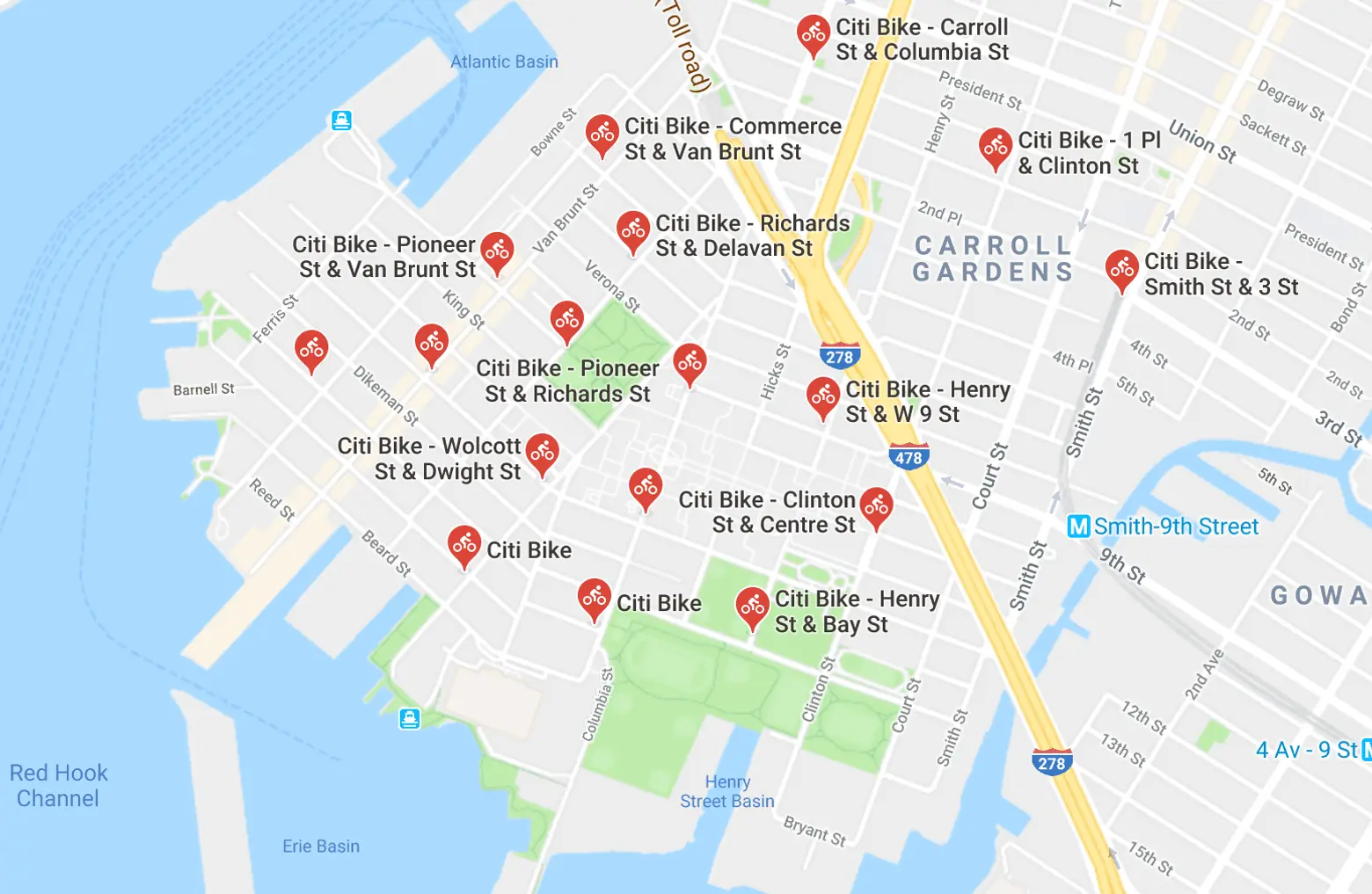 Google Map of Red Hook’s Citi Bike stations
Google Map of Red Hook’s Citi Bike stations
The AECOM report cites that Red Hook residences live 10-25 minutes away from subway access. Two bus lines (B61 and B57) service Red Hook. The common refrain about Red Hook is that it is cut off from the rest of Brooklyn and Manhattan. AM New York referred to Red Hook as the, “notorious transit desert of Brooklyn.”
But Victoria Hagman, the owner and broker at Realty Collective in Brooklyn, disagrees. “There’s a lot of repetition about being severed. The ferry and Citi Bikes have changed Red Hook dramatically. The ferry alone surpassed rider expectations and it’s a huge platform to expand on. There is no reason we can’t be making links for jobs and housing throughout the tri-state area through the ferry system, like from Brooklyn to Jersey City and Brooklyn Staten Island. It requires a low financial investment, it’s low impact for infrastructure and can be implemented right away. It took under a year from the ferry site selection to implementation in Red Hook.”
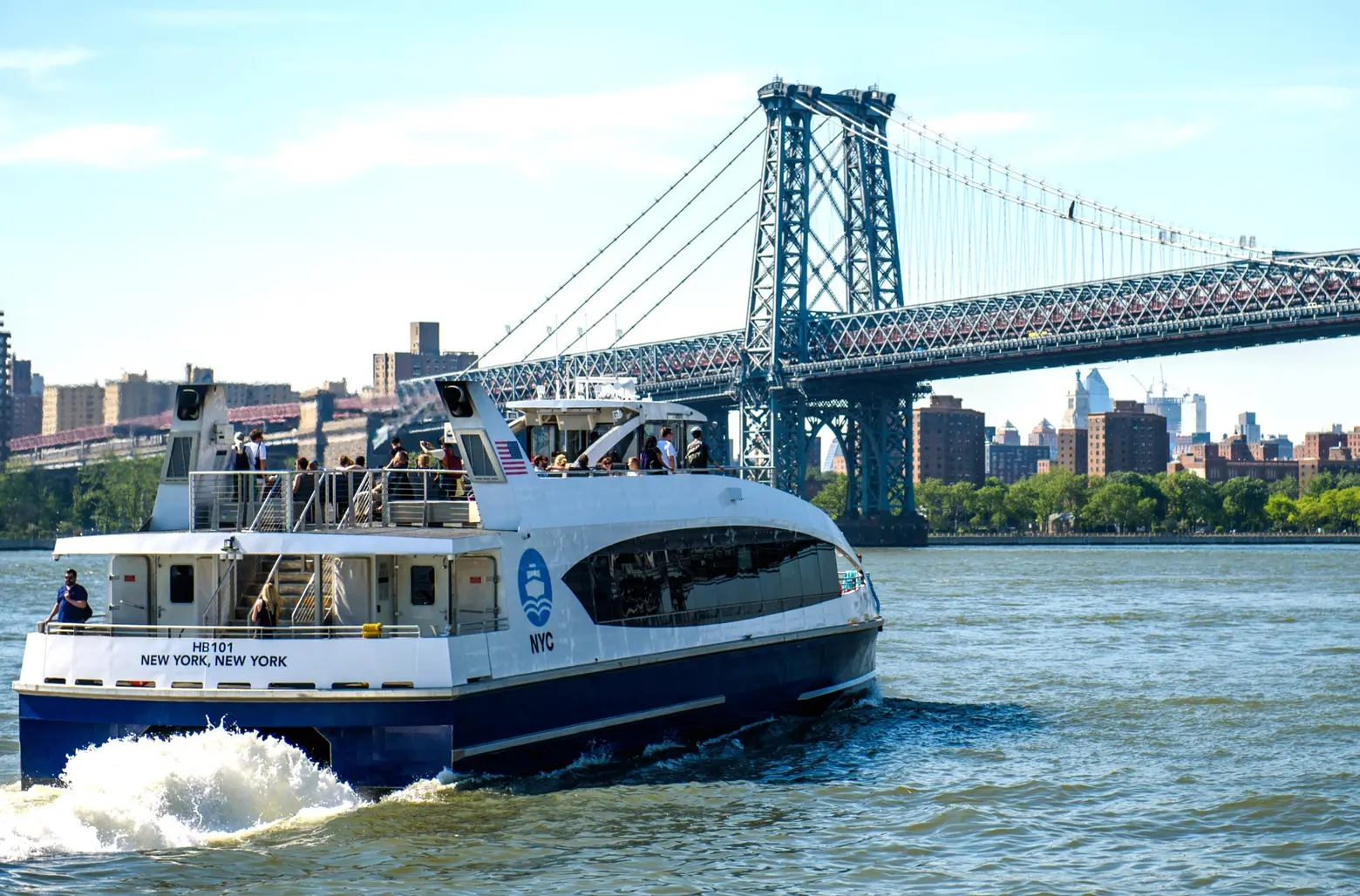
The recently launched ferry service connects Red Hook to Wall Street in a trip that totals 21 minutes. NYCEDC President Maria Torres-Springer said, “By locating the Red Hook Citywide Ferry Service landing at Atlantic Basin, we will provide a reliable and affordable transportation alternative for a community that has historically had limited transit options.” Torres-Springer estimated the Ferry would serve, “over 6,000 residents that live within a half-mile radius, including many families that reside in NYCHA’s Red Hook Houses.”
Fiala says, “We love the ferry!” but laments the fact that the MTA does not allow transfers between the ferry and subway.
The Brooklyn Queens Connector/BQX
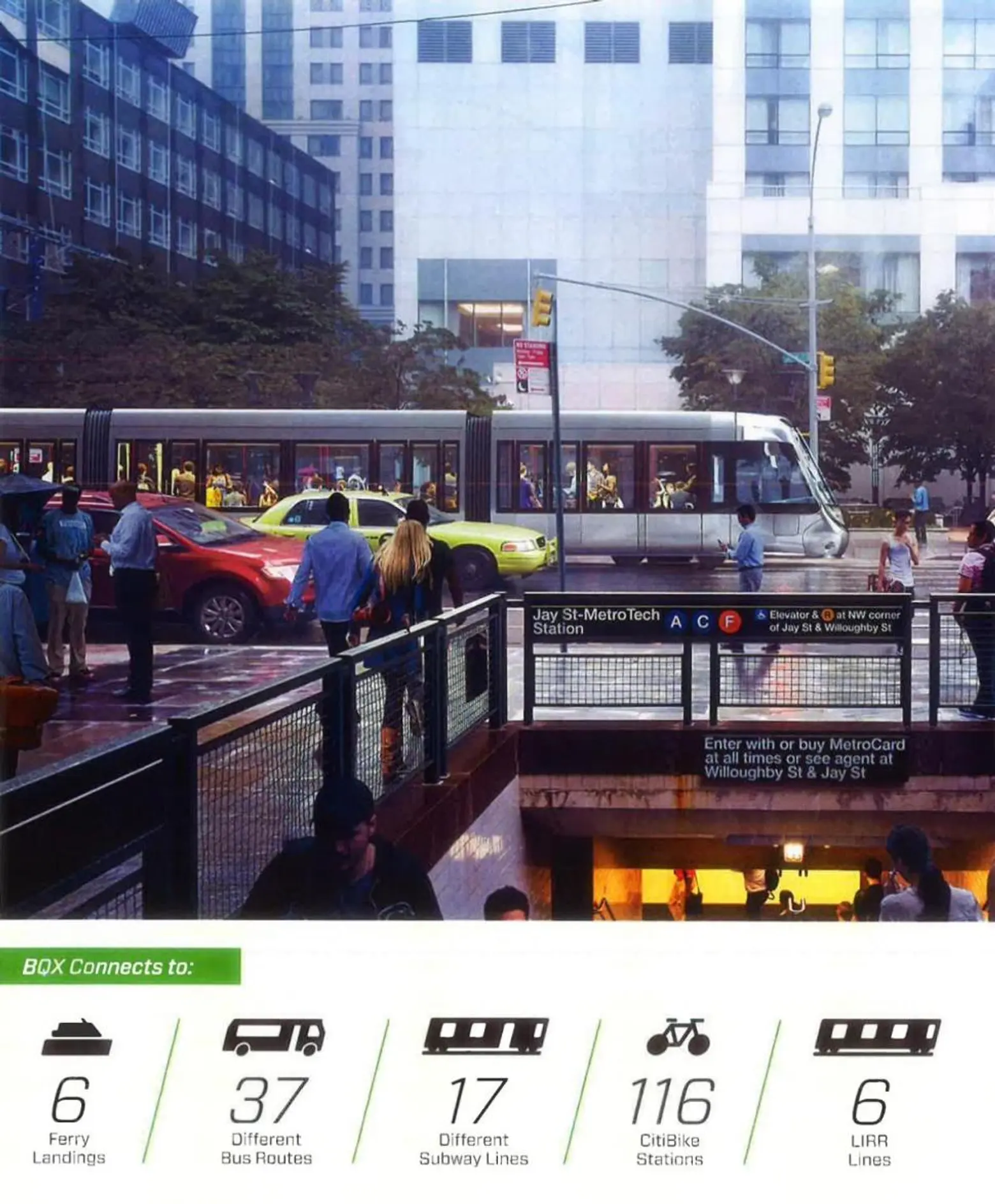
There has not been a trolley in New York since 1957. Originally proposed in 2011, the Brooklyn Queens Connector project has gained new life as the de Blasio administration began backing it in 2016. The BQX proposal is a 16-mile waterfront streetcar that would run from Astoria to Red Hook.
In July 2017, the Transport Workers Union Local 100 endorsed the project. “John Samuelsen, president of the TWU, told the Daily News his union could add several hundred jobs to its current roster, including streetcar operators, drivers, maintainers, and supervisors.” The specific route is yet unknown as they conduct feasibility analyses.
Rohit Aggarwala, the chairman of the Fourth Regional Plan of the Regional Plan Association, was quoted in Crain’s as saying, “With a dedicated right of way for almost all of its route, the BQX would be faster than driving and far more pleasant than the bus. It would link the entire set of waterfront neighborhoods and give them access to the subway and the East River Ferry system.”
The BQX project criticism is the length of the project (the earliest completion date would be 2024), the unclear source of funding and the fact that it is not connected to the subway system. Hagman asked, “Why not put in more buses? That costs nothing.”
The Subway Extension Proposal
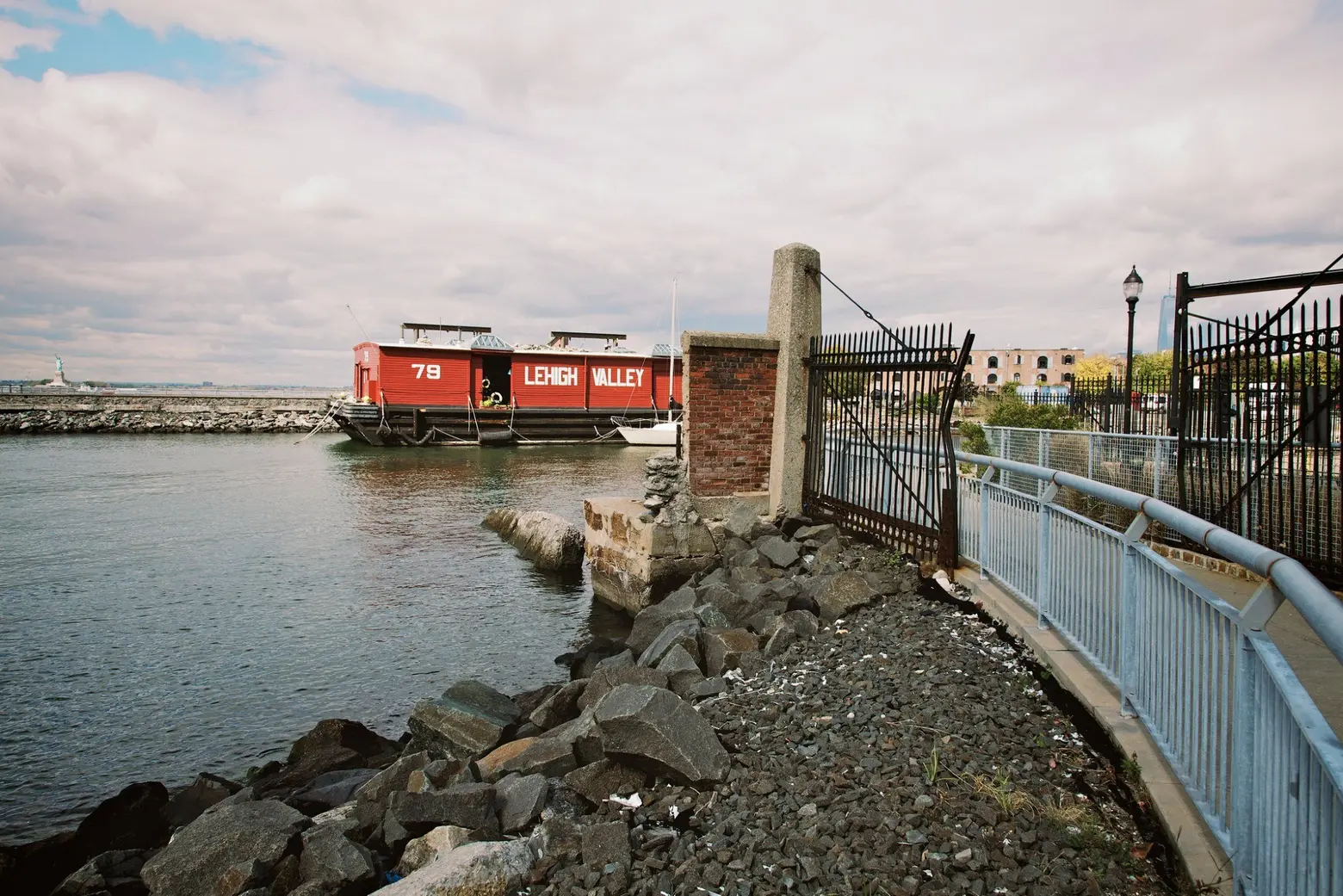 Red Hook waterfront, photo via Sunghwan Yoon on Flickr
Red Hook waterfront, photo via Sunghwan Yoon on Flickr
Out of his 22 proposals in his State of the State address, Governor Andrew Cuomo’s 21st proposal calls, “on the Port Authority and the Metropolitan Transportation Authority to study potential options for relocating and improving maritime activities and enhancing transportation access to Brooklyn’s Red Hook neighborhood.”
Cuomo wants to explore the option relocating the maritime operations from the Red Hook Container Terminal to the South Brooklyn Marine Terminal in Sunset Park.
Extending the 1 subway line to Red Hook would cost an estimated $2.9 billion and require the construction of an underwater tunnel. Cuomo is only asking the MTA to look into building one subway stop in Red Hook.
Hagman does not think either the streetcar or subway extension proposals will succeed, “These are political, shiny fancy plans that politicians want to dangle in front of people. The mayor has ton of backlash for BQX and I can’t imagine the financing for the subway extension will happen because the numbers do not make sense. The residents of Brooklyn have not gotten behind either one of these proposals. It’s just a nice way to avoid other issues we should be focusing on.”
At a recent town hall meeting, Hagman asked deBlasio about how the Mayor will mitigate real estate speculation along the BQX route. “He said, ‘There is no plan’ ”
The Future of Red Hook
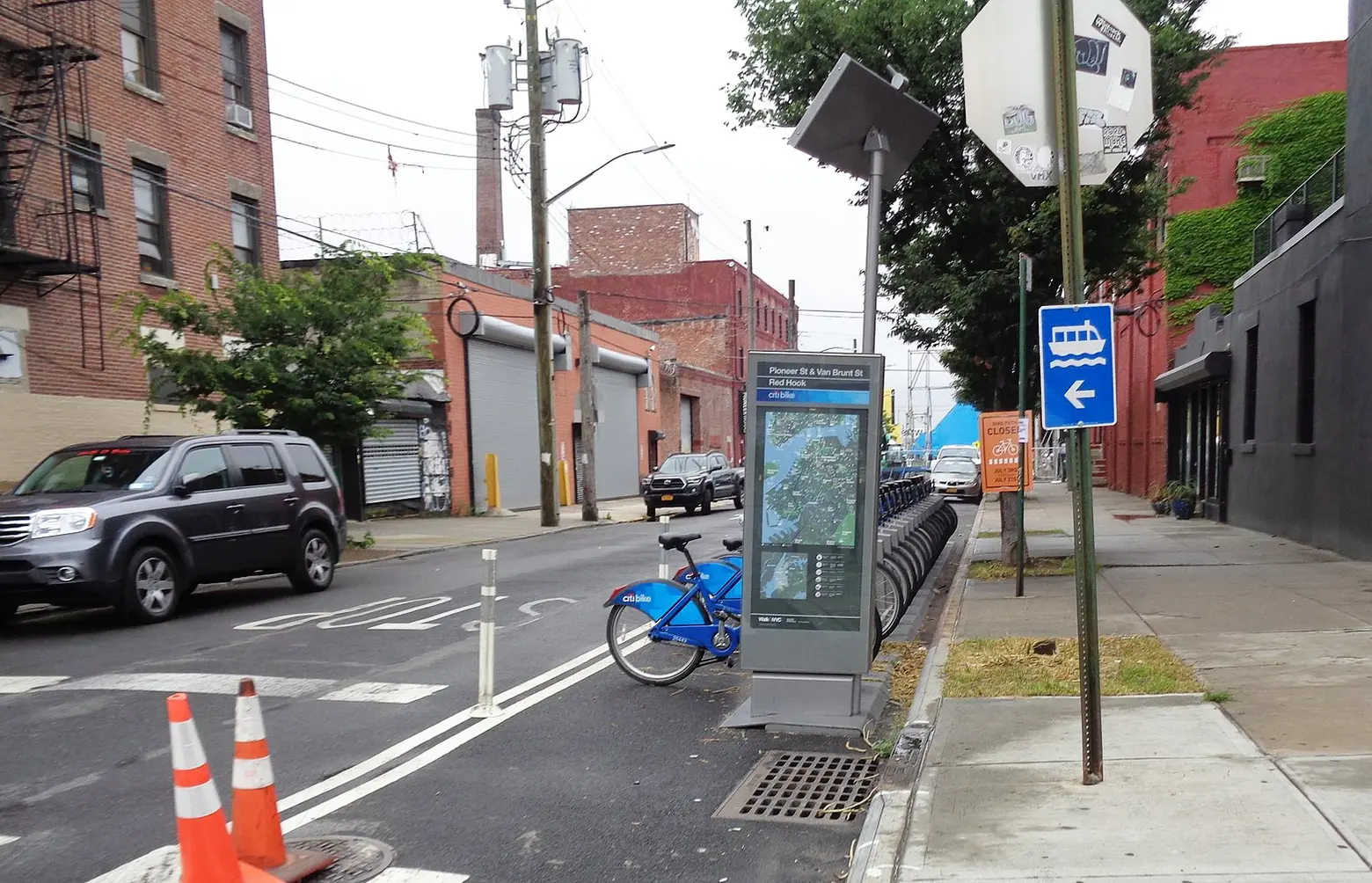
Van Brunt Street and Pioneer Street in Red Hook, via Wiki Commons
The future of Red Hook is unclear. Change is happening (who would have thought there would be a Tesla showroom in Red Hook a few years ago?) but the pace and scale of future change is unknown.
According to Hagman, there is currently more real estate inventory than there has ever been. She explains this is because developers came and bought land before Hurricane Sandy and those developments are now finished and on the market. But Hagman says that because most of the listings are quite similar, and mostly luxury listings like King & Sullivan $3 million townhomes, there is not enough demand to meet the supply.
The pace and scale of the change of the current proposals seem to be the issue that worries local residents the most. Helfand says, “No one wanted the IKEA and Fairway came, no one wanted any of it. But in reality, it hasn’t been bad for us. It’s really been okay.”
But if Cuomo, deBlasio and/or AECOM’s plans get approval and funding, Red Hook will look very different in 10-15 years. Helfand reiterated, “It’s nice that there are different ways to live in New York City. If big development happens, maybe Red Hook won’t be so different anymore. It would be sad if Red Hook lost its character. Being able to come home to the relative peacefulness has been my saving grace. You can still sometimes go the water and not see anybody. Red Hook has always been a respite.”
RELATED:
- Cuomo asks MTA to study possible subway extension from Manhattan to Red Hook
- As Red Hook’s Norman Foster office complex plans move forward, local residents want more input
- My 2,200sqft: Rug designer Amy Helfand shows us around her organic live/work home in Red Hook
- Owner of Red Hook waterfront terminal asks city to consider his site for Brooklyn-Queens Streetcar railyard
Get Insider Updates with Our Newsletter!
Leave a reply
Your email address will not be published.
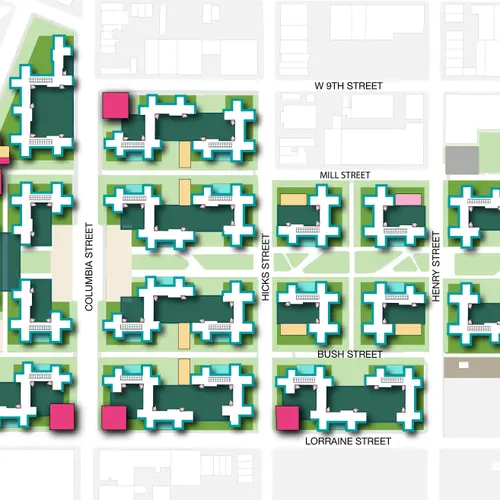
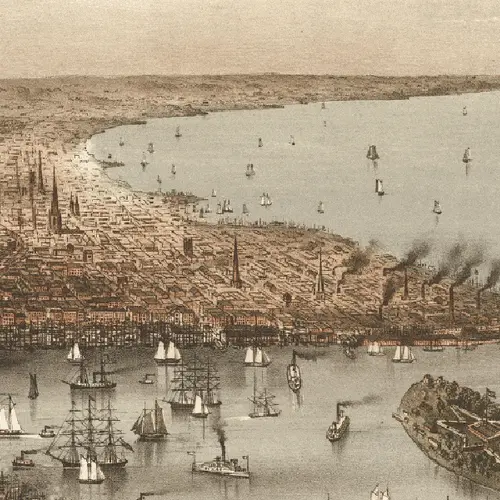
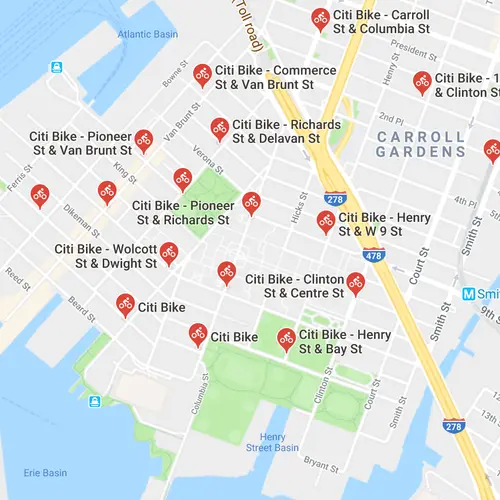
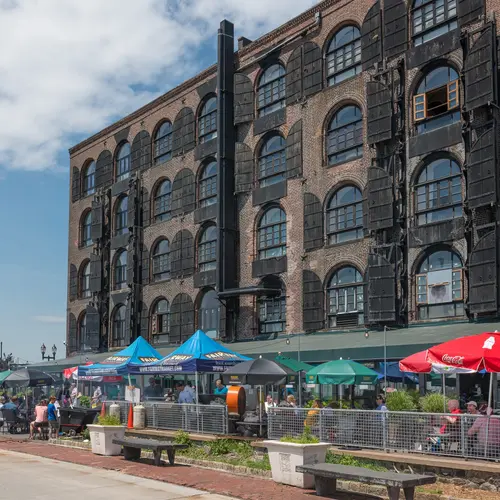
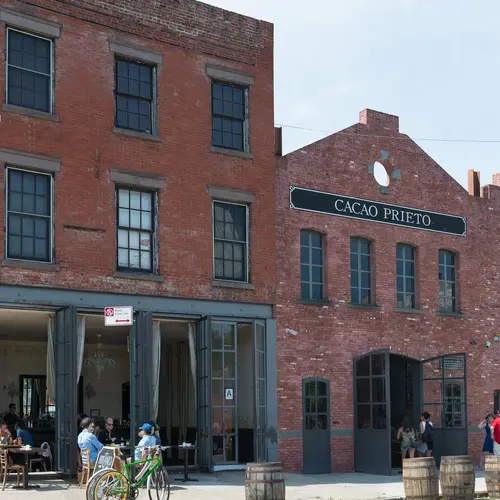
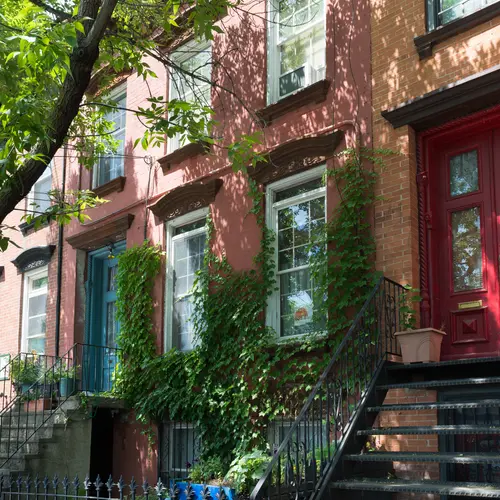
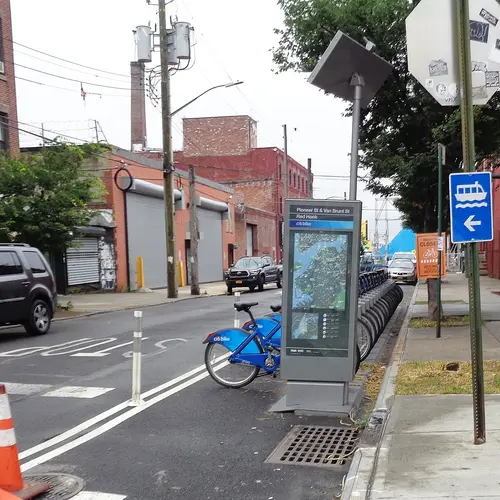
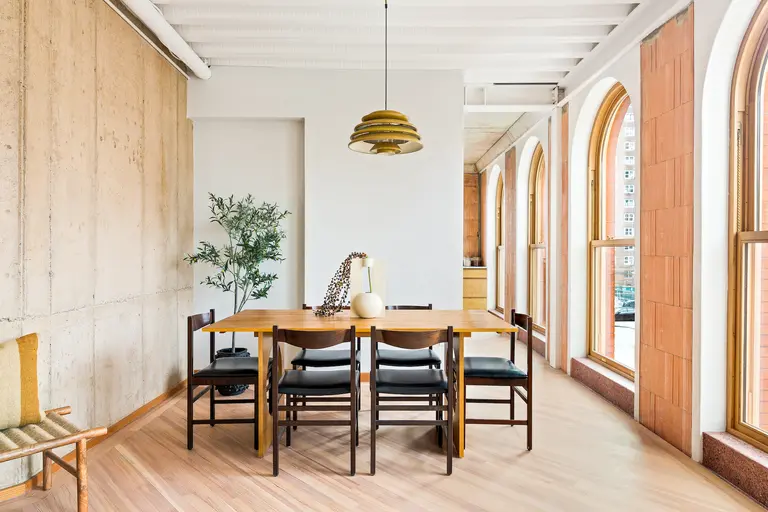
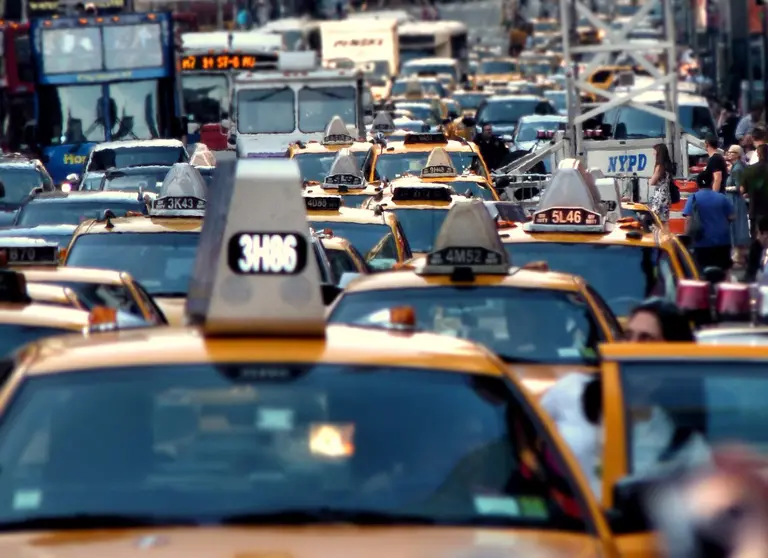
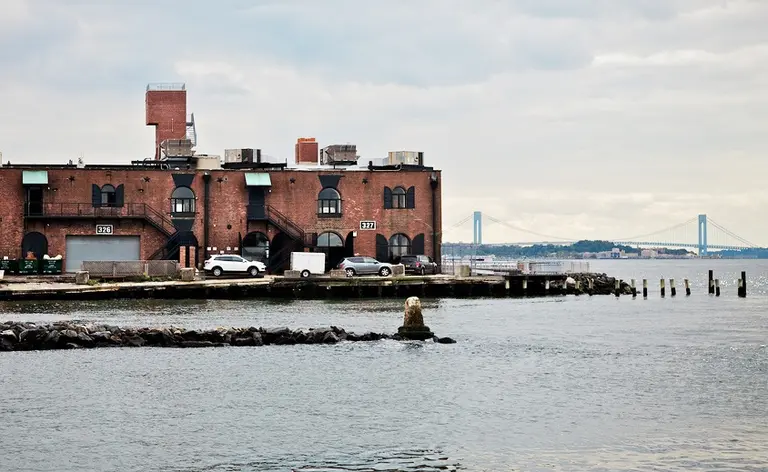
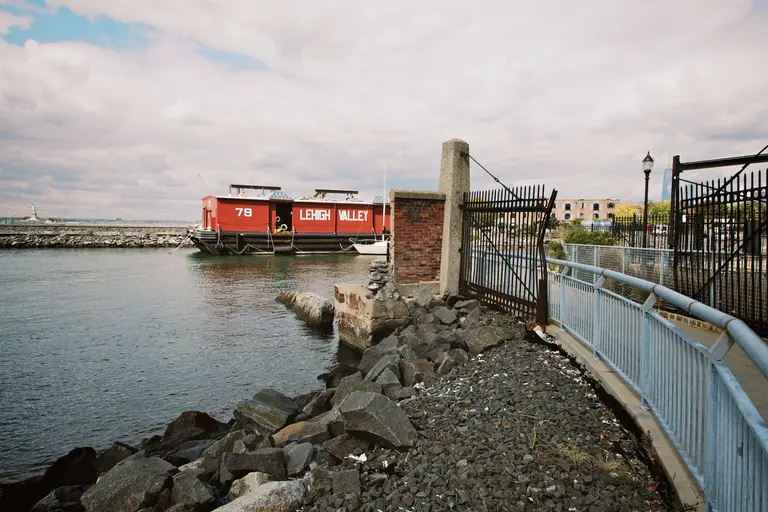
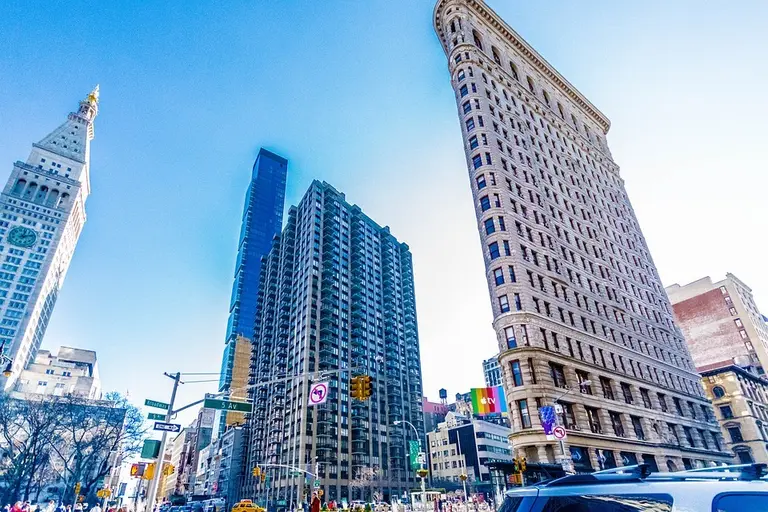
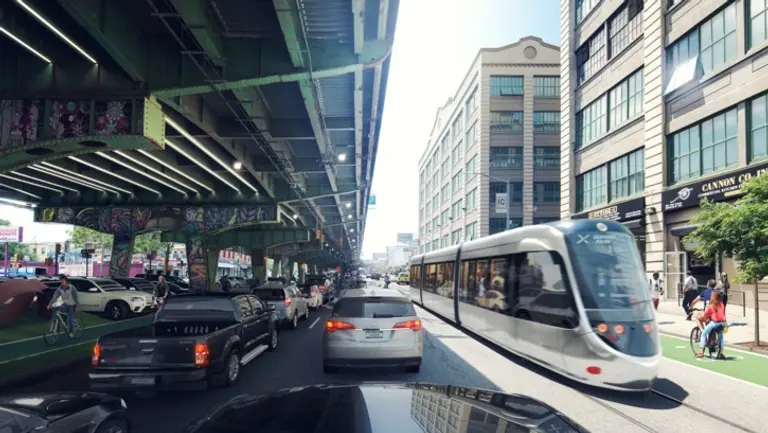





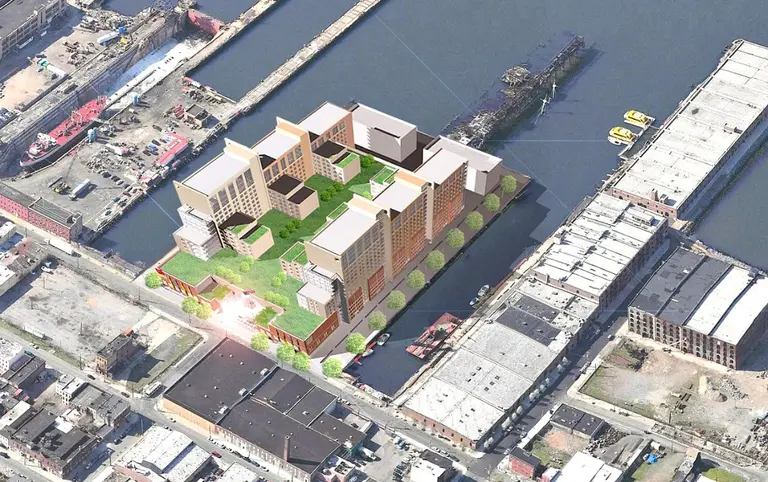
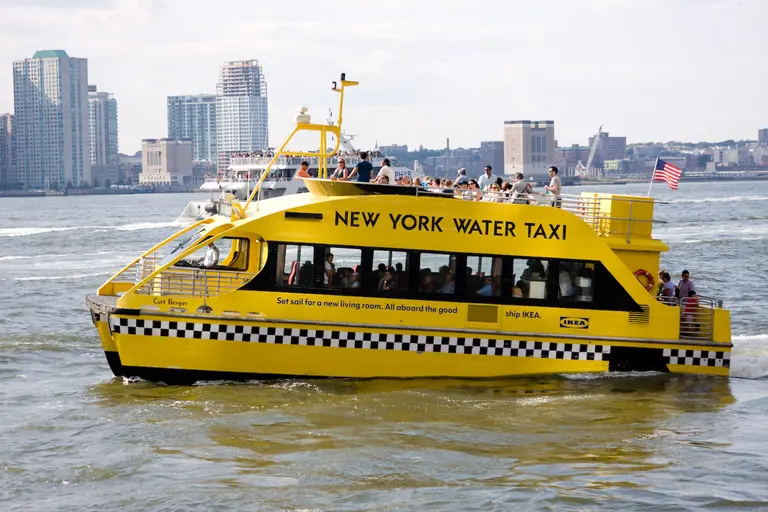
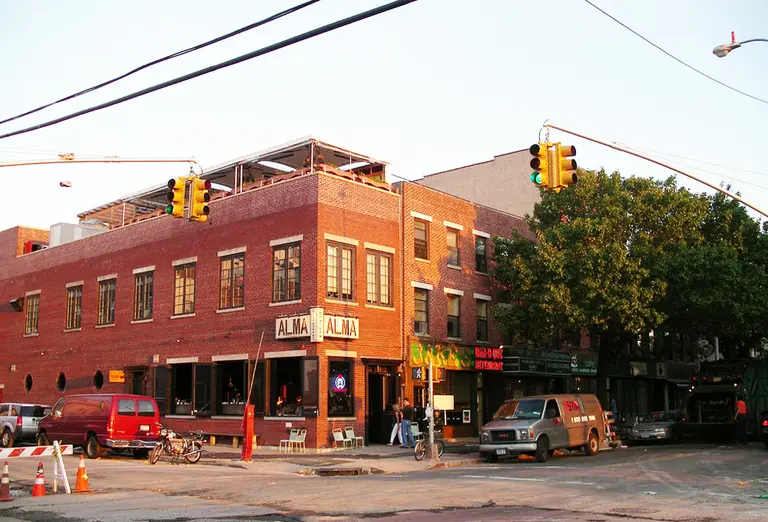
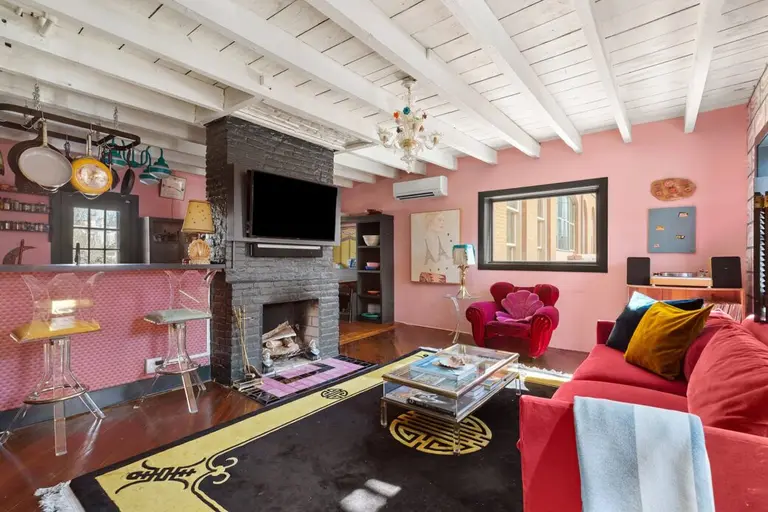

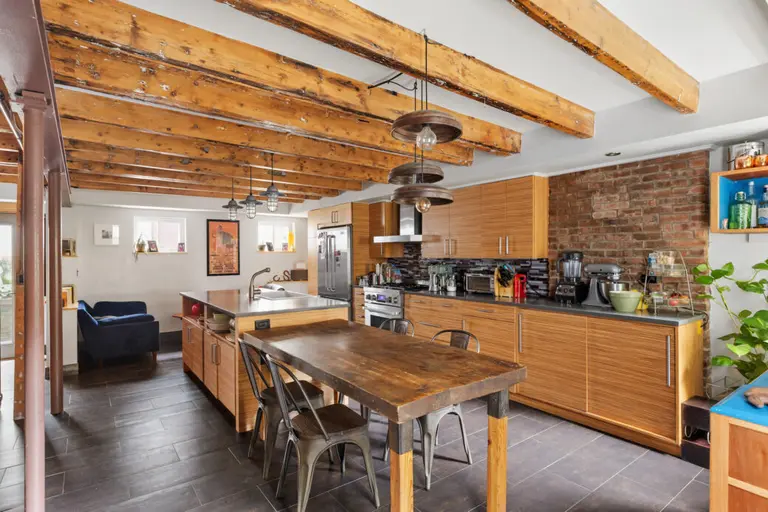












This is a great article. I am in Red Hook and I am getting a little frustrated with some of the comments from residents. A lot of “we” don’t want this, and “we” don’t want that. If there is one thing I can tell you for sure, it’s that Red Hook does not speak with one voice. So while some of the old money residents who don’t rely on the neighborhood for income, or transportation to get to work, it’s easy to say “leave it alone”. But for thousands of people who would like to be able to get to work without walking the gauntlet across the BQE or cramming on to the B61 (if it ever shows up at all), some investment would be very welcome. Also, the ‘character’ of Red Hook means different things to different people. It certainly isn’t contained in the urine-filled Snapple bottle, discarded by full-bladdered taxi drivers, nor is it found in the streets filled with discarded trailers, or lots full of rats and rotting cars. I won’t miss the garbage-strewn streets (which are that way because there are no trash receptacles away from Van Brunt) or for that matter cars traveling down Summit St at 60mph, or idiots riding on the sidewalks because it’s not their neighborhood, and why should they care.
I’d love to see Red Hook develop in a way that is rewarding to the people who live there and the businesses that took as chance on the neighborhood (not just Fairway and IKEA). So when someone says “we don’t want…”, please take it with a pinch.